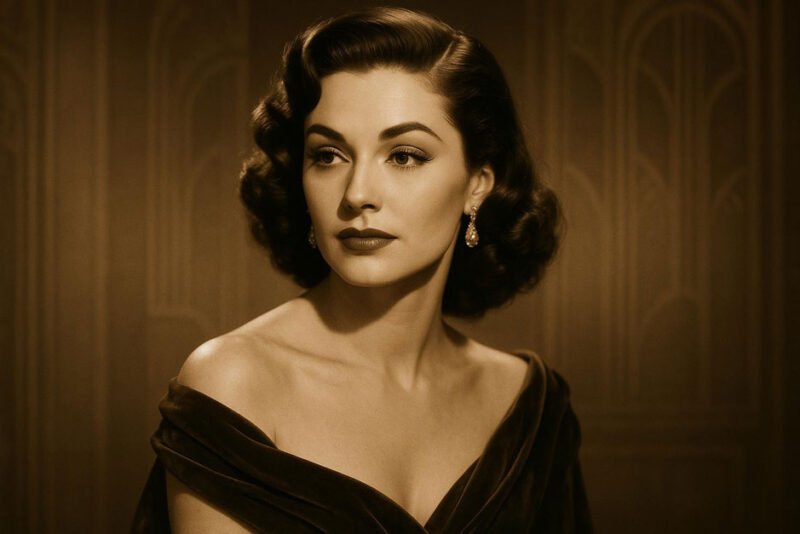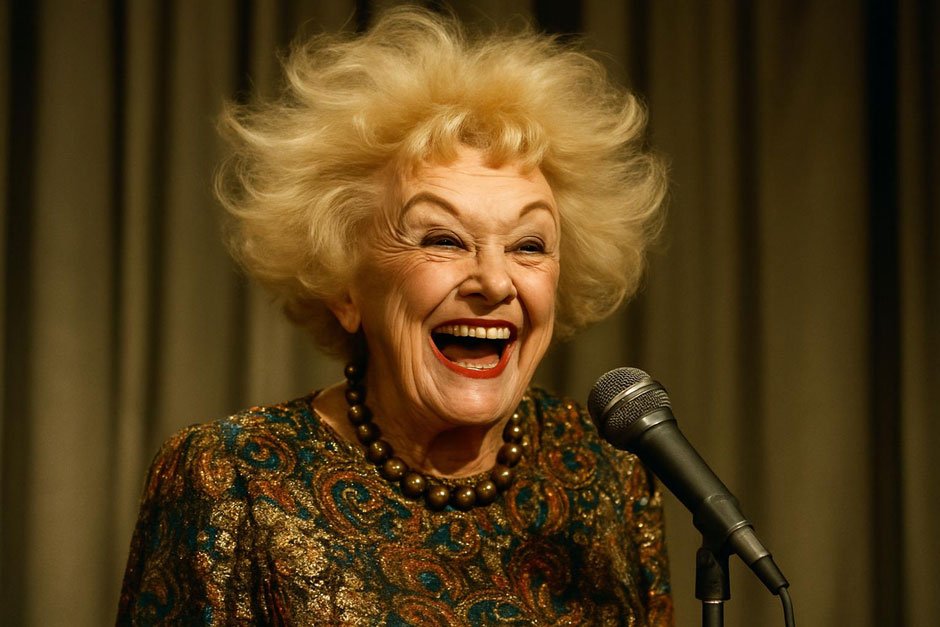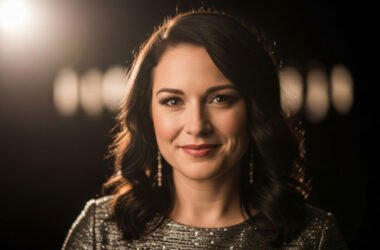Early Life and Hollywood Beginnings
Born Marguerite Diane Empey on July 29, 1932, in Hollywood, Los Angeles, Diane Webber entered the world surrounded by entertainment industry influences. Her mother, Marguerite Andrus, had already made her mark as a Hollywood actress and Miss Long Beach beauty contest winner. Meanwhile, her father Arthur Guy Empey worked as a writer and producer, ensuring that creativity and artistic expression were constant themes in young Diane’s household.
Growing up in this artistic environment, Webber received her formal education at Hollywood High School. During her childhood, she demonstrated a natural affinity for performance arts, particularly dance. She received professional ballet lessons from Maria Bekefi, a distinguished Russian ballerina who helped shape her early understanding of movement and artistic expression.
In the early 1950s, Webber took her first professional steps into the entertainment world. She found employment as a chorus girl at the renowned Bimbo’s 365 Club in San Francisco. This experience provided her with valuable stage presence and performance skills that would serve her throughout her diverse career.
Rise to Fame as a Model and Playboy Icon
The early 1950s marked Webber’s transformation from aspiring performer to professional model. She caught the attention of industry photographers who recognized her photogenic qualities and natural camera presence. Working with established names like Peter Gowland, Bunny Yeager, and Keith Bernard, she quickly built a reputation that extended throughout the modeling community.
Her breakthrough moment came when she became Playboy magazine’s Playmate of the Month under her birth name, Marguerite Empey. She achieved this distinction twice, first in May 1955 and again in February 1956. The second photo shoot was notably conducted by Russ Meyer, who would later become a prominent filmmaker.
Webber’s modeling career extended far beyond Playboy magazine. She appeared in numerous men’s publications throughout the 1950s and 1960s, including Esquire, Frolic, Escapade, Adam, and many others. Her striking 5’2″ brunette appearance and 39C-23-37 figure made her one of the most recognizable pin-up models of her era.
Transition to Acting and Television Career
Television offered Webber new opportunities to showcase her acting abilities beyond modeling. She landed guest roles on several popular series that defined late 1950s and early 1960s television. Her appearances on Peter Gunn, Highway Patrol, and Markham demonstrated her range as a performer and helped establish her presence in the acting community.
The prestige of appearing on Alfred Hitchcock Presents in 1961 represented a career milestone. Her role in “The Other Woman” episode placed her among the many notable actors who worked with the master of suspense. That same year, she took on the role of Estrellita in the TV movie Rio, further expanding her television portfolio.
Webber’s film career included several notable B-movie appearances. Her role as the Mermaid Queen in Mermaids of Tiburon (1962) became one of her most recognized performances. She later reprised a similar aquatic character in a 1967 episode of Voyage to the Bottom of the Sea titled “The Mermaid.”
Album Cover Modeling and Music Industry Presence
During the late 1950s and throughout the 1960s, Webber became a popular choice for album cover photography. Her elegant appearance graced the covers of several significant jazz and popular music releases. Notable albums featuring her image included George Shearing’s Satin Brass (1959), Les Baxter’s La Femme (1956), and Nelson Riddle’s Sea of Dreams (1958).
These album covers helped establish Webber as a visual icon of the era’s sophisticated entertainment culture. Her presence on these recordings connected her with the jazz and lounge music scenes that were flourishing during this period. The collaboration with artists like Xavier Cugat and Marty Paich further cemented her status as a cultural figure beyond traditional modeling and acting.
Advocacy for Nudism and Cultural Movement
In the mid to late 1960s, Webber became involved with the American nudist movement. She embraced this lifestyle as part of the broader counter-culture movement that was gaining momentum during this period. Her advocacy extended beyond personal practice to active promotion of nudist principles and lifestyle.
Webber appeared in numerous nudist publications and participated in educational efforts about the movement. In 1965, she traveled to Sioux City to provide testimony in a court case involving the distribution of nudist publications. Rather than supporting the prosecution’s case as expected, she delivered a passionate defense of the nudist lifestyle and its principles.
Her involvement in this movement was documented in the book “Naked and Together: The Wonderful Webbers” by June Lange in 1967. This publication provided insight into her personal philosophy and commitment to the naturist lifestyle.
Belly Dancing Career and Middle Eastern Dance
From 1969 to 1980, Webber embarked on a new chapter of her career as a professional belly dancing instructor. She established herself at Everywoman’s Village in Van Nuys, California, where she taught Middle Eastern dance techniques. Her approach to belly dancing was both artistic and educational, focusing on the cultural significance of the dance form.
Webber founded Perfumes of Araby, recognized as one of the first Middle Eastern dance companies in the United States. Her performances were noted for their artistic integrity and cultural authenticity. She often performed with her students in public venues throughout Los Angeles, accompanied by traditional Middle Eastern music.
Her dancing shows attracted diverse audiences, including women and children, demonstrating that her performances transcended typical entertainment boundaries. These outdoor shows sometimes featured up to forty performers, showcasing the community she had built around Middle Eastern dance.
Later Life and Lasting Legacy
In her final years, Webber transitioned to a quieter professional life as a librarian and archivist for a law firm in Santa Monica. This career change reflected her intellectual interests and desire for a more stable lifestyle. She had married Joseph Webber in 1955, and their union produced a son named John, born in 1956. The marriage ended in divorce in 1986.
Webber’s cultural impact extended beyond her immediate career achievements. She was featured prominently in Gay Talese’s non-fiction book “Thy Neighbor’s Wife” (1980), which examined changing American attitudes toward sexuality and relationships. Talese had previously written an extensive article about her in Esquire magazine in August 1975.
On August 19, 2008, Diane Webber passed away in Los Angeles at the age of 76, following complications from cancer surgery. Her death marked the end of a remarkable life that had spanned multiple entertainment industries and cultural movements.
Cultural Impact and Recognition
Webber’s influence on American entertainment culture during the 1950s and 1960s cannot be overstated. She represented a bridge between traditional Hollywood glamour and the emerging counter-culture movements of the 1960s. Her willingness to embrace different artistic forms, from ballet to belly dancing, demonstrated a commitment to artistic exploration that was ahead of its time.
Her work with renowned photographers helped define the aesthetic standards of mid-century American photography and modeling. The album covers she graced became collector’s items, representing the sophisticated visual culture of the jazz age. Her advocacy for the nudist movement reflected the changing social attitudes of the 1960s and her personal commitment to individual freedom and expression.









